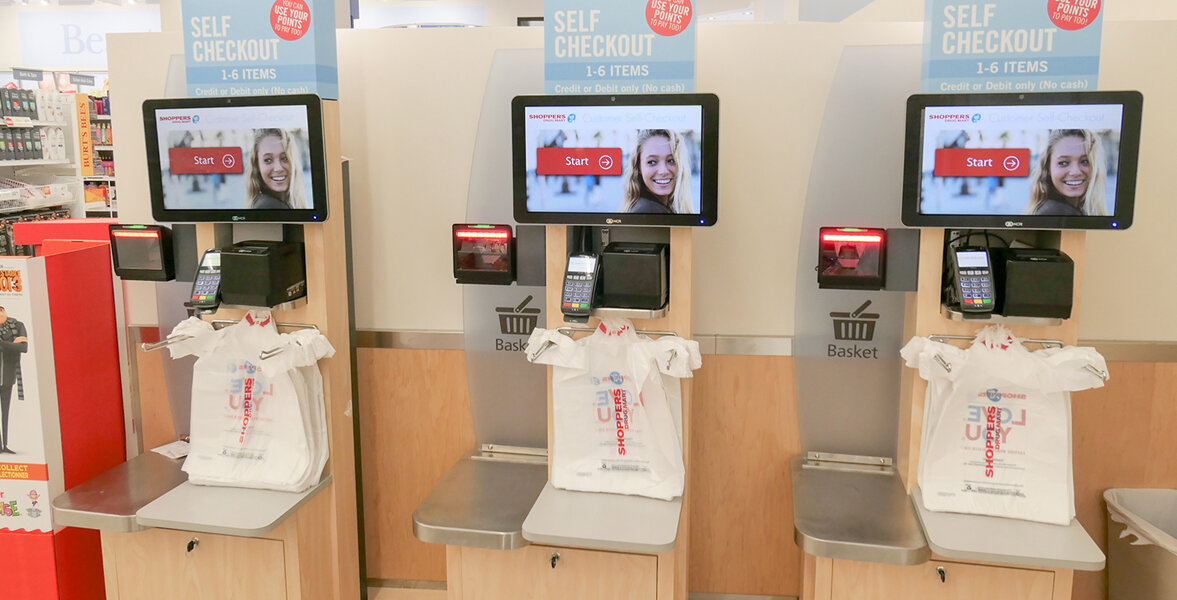Thinking Beyond Self-Checkouts to Improve the Customer Experience in Grocery Stores
/self checkouts, shoppers drug mart
By: Ryan Webber, Vice President of Enterprise Mobility, SOTI
Self-checkouts, which are now pervasive in most grocery stores in Canada, ushered in a sea of change in consumer shopping habits. Now, grocery retailers are looking beyond self-checkouts to design the next generation of in-store experiences that will keep shoppers coming back.
The biggest trends to watch for in the coming years are in interactive digital displays, data extraction, and further application of IoT.
Many modern retailers already use digital displays to connect with their customers, but some are progressing further to offer an in-store shopping experience that is more in line with their ecommerce experience. This can be seen with stores helping customers build shopping lists online for purchasing in store, or furthering the digital display interaction by serving up individually tailored offers in aisle, based on searches or purchase patterns.
image: food navigator
Social media data extraction is also being used to predict what shoppers are most likely to buy and to address some of their biggest complaints. A person’s social network tells us what they like and don’t like but also reveals which complaints are the most common or recurring. By connecting this to datasets collected in-store, special offers or new products and services can then be introduced to shoppers that will continue to enhance the personal grocery shopping experience.
Behind-the-scenes, the use of IoT is giving retailers real-time visibility over their inventory, signalling where items are located and when product is nearing out of stock. This helps companies improve customer satisfaction—what’s more disappointing than seeing that the product you want is out of stock—increase sales velocity and streamline inventory management operations, eliminating the average of 20 hours spent per week in conducting manual stock counts.
facial recognition checkouts. photo: trend hunter
The Use of Facial Recognition
Long term, we will also see more widespread use of facial recognition once retailers prove they can meet customers’ expectations of privacy. At checkout, facial recognition can speed up transactions and make them more secure, and it can also deliver new and unexpected ways to tailor the in-store experience. Digital displays with facial recognition, for example, can help retailers better understand how different types of customers use their stores—where they gravitate towards, what signage is catching their eyes—even alerting sales staff when a customer appears to need assistance. Insights gleaned from this data can aid retailers in designing the most dynamic layout for ultimate sales potential. Or they can offer personalized discounts by leveraging IoT devices when shoppers appear to be considering impulse purchases, unsure of which brand to go with.
Facial recognition technology is available now, but customer acceptance hasn’t quite caught up just yet. This was made apparent by the backlash to Toronto-based Foody Mart’s announcement that they’re looking to bring this method of payment—already ubiquitous in China—to North America.
photo: freson bros.
Making Time to Get Personal With Your Customers
As competition intensifies in the grocery market, we’re seeing a new wave of innovations in customer experience benefiting shoppers. Digitizing more of the physical experience in-store is allowing retailers to shift their focus to providing more personalized customer experiences that truly set them apart, like the in-store meat smoking offered at Alberta grocer, Freson Bros, or The Beer Den at Lowes Foods, where you can find an impressive selection of craft beers and drafts.
Key Takeaways
For the benefit of the customer and to help push the industry forward, tech innovations should complement, not overtake the role of employee experts.
When strategized properly, technology can enhance the role of employees who can now shift focus to providing a more personalized customer experience.
Prioritizing consumer data safety and privacy across all access points is essential. To achieve this, mandatory opt-in approval for tracking is necessary, which will help to make all shopping touch points tailored and seamless.
Ryan Webber is Vice President of Enterprise Mobility, SOTI











![L.L.Bean Continues Canadian Expansion with 1st Toronto Store [Photos]](https://images.squarespace-cdn.com/content/v1/529fc0c0e4b088b079c3fb6d/1603908990197-KDT3UNTEHFBFJF5FJ36N/L.L.Bean_Don_Mills_8.jpg)



![Retail-insider-NRIG-banner-300-x-300-V01-3[2].jpg](https://images.squarespace-cdn.com/content/v1/529fc0c0e4b088b079c3fb6d/1593476525034-QRWBY8JUPUYFUKJD2X9Z/Retail-insider-NRIG-banner-300-x-300-V01-3%5B2%5D.jpg)
![Retail-insider-NRIG-banner-300-x-300-V01-2[2].jpg](https://images.squarespace-cdn.com/content/v1/529fc0c0e4b088b079c3fb6d/1593476491497-W6OZKVGCJATXESC9EZ0O/Retail-insider-NRIG-banner-300-x-300-V01-2%5B2%5D.jpg)
![Retail-insider-NRIG-banner-300-x-300-V01-4[2].jpg](https://images.squarespace-cdn.com/content/v1/529fc0c0e4b088b079c3fb6d/1593476508900-TJG5SNQ294YNOCK6X8OW/Retail-insider-NRIG-banner-300-x-300-V01-4%5B2%5D.jpg)
Other news: Gap closing most mall stores, co-working space replaces Shinola store, Star Bédard rebrands, Nobis gets charitable.